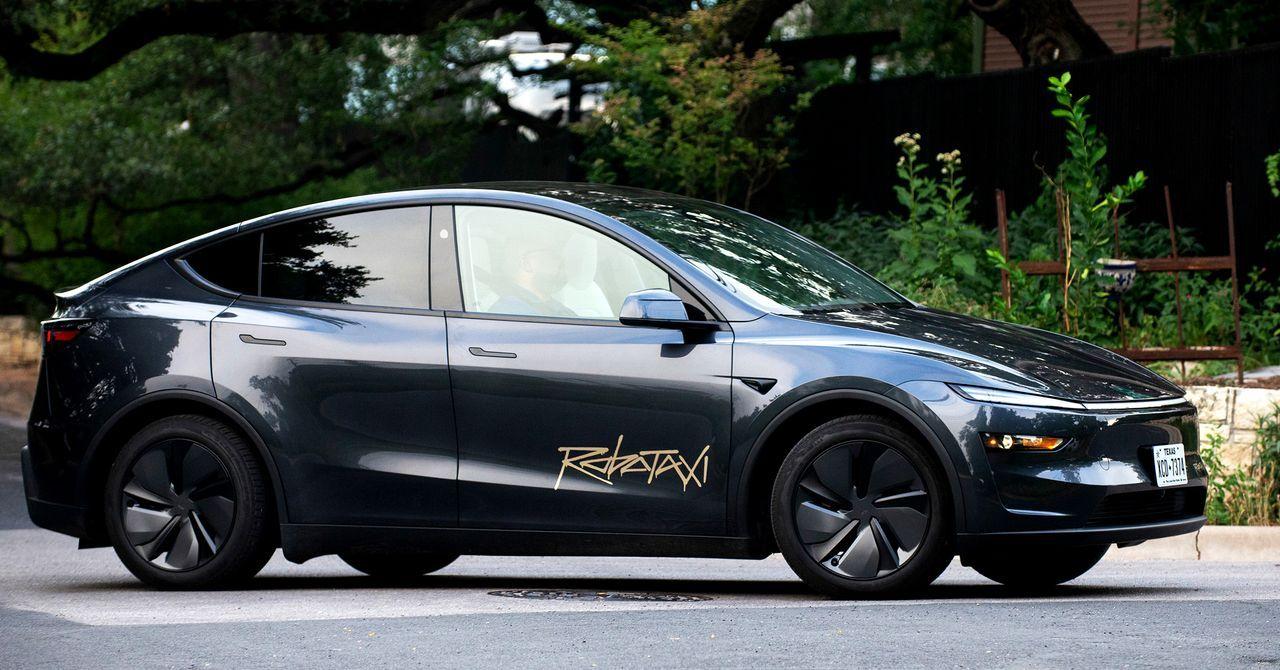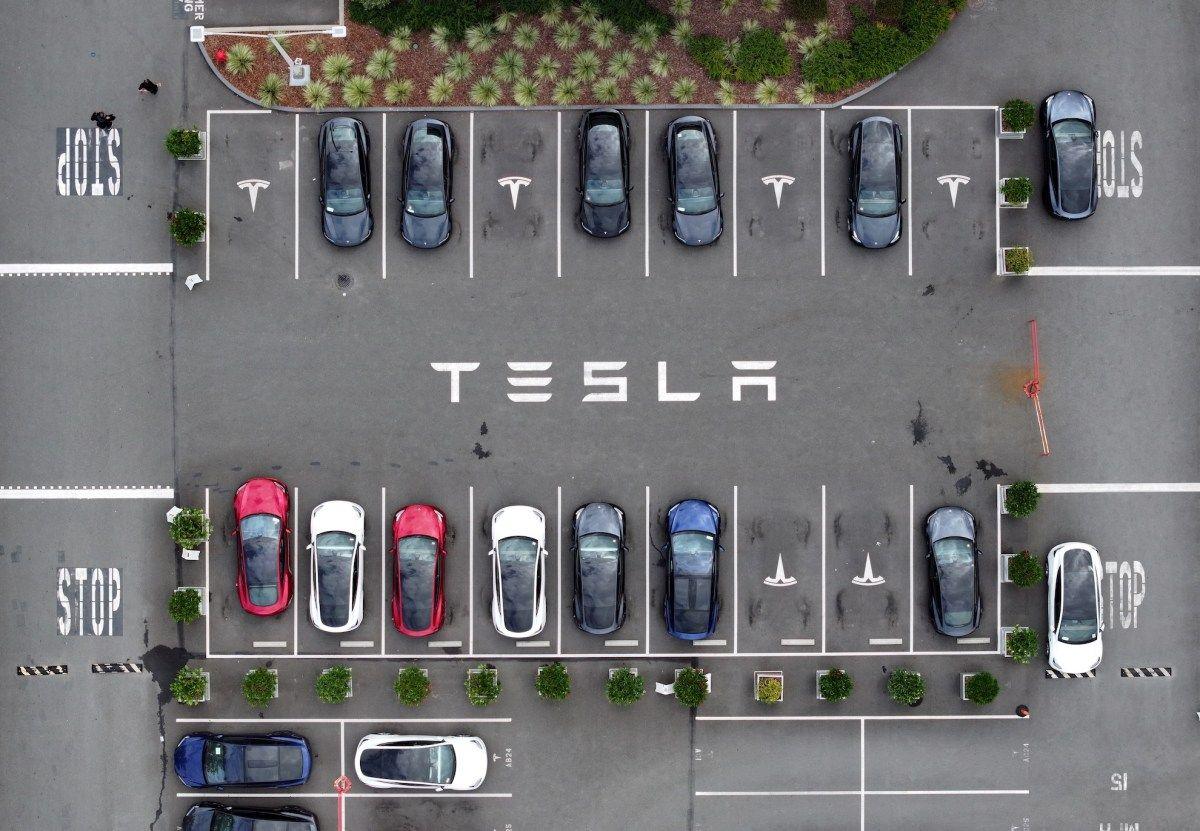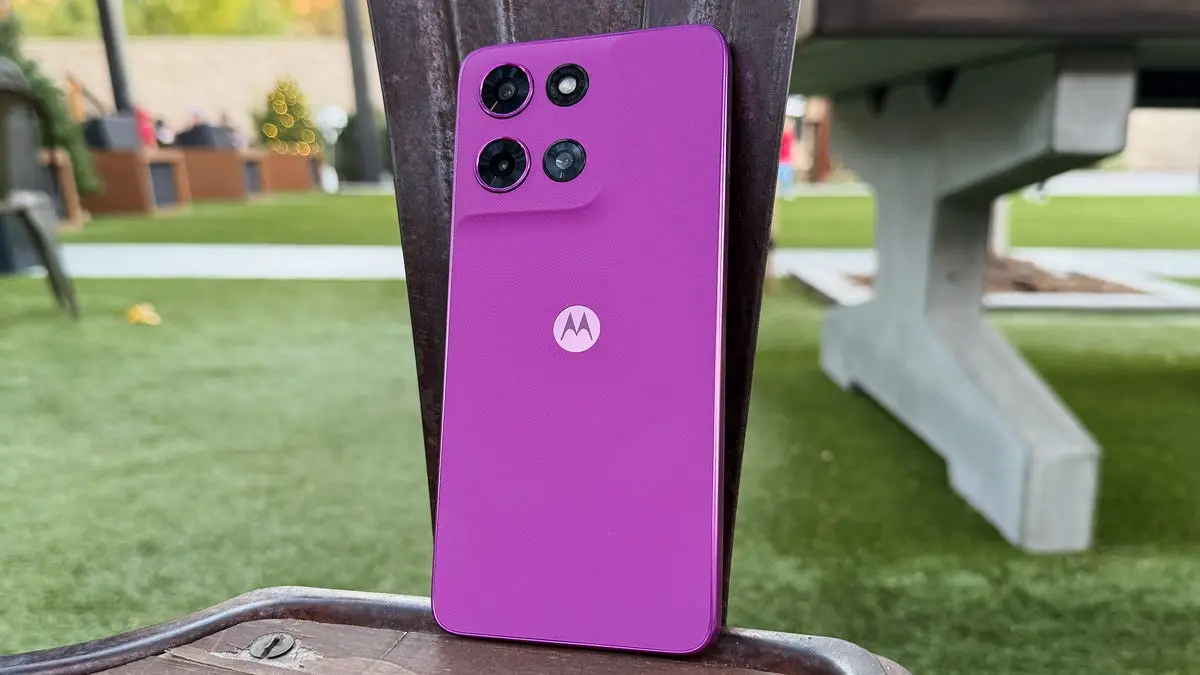Tesla's Robotaxi Launch Faces Scrutiny Amid Safety Concerns and Erratic Driving Reports
6 Sources
6 Sources
[1]
US safety regulators contact Tesla over erratic robotaxis
In a statement, the NHTSA said it was "aware of the referenced incidents and is in contact with the manufacturer to gather additional information." Despite the importance Musk places on his robotaxi project, Sunday's launch was low key. A small group of invited analysts, influencers and shareholders participated in paid rides. Musk congratulated Tesla's artificial intelligence and chip design teams on the launch in a post on X, external, writing that it was "culmination of a decade of hard work". However, social media footage seems to show the vehicles struggled with real world driving scenarios. One video seems to show a robotaxi stopping abruptly as it passes a parked police car. Tech news outlet TechCrunch said cars were also seen speeding and swerving into the wrong lane. The rollout is limited to 12 taxis and Tesla says they won't operate in bad weather, attempt difficult intersections or carry customers below the age of 18. Analysts had already said the small-scale launch showed how far Tesla has to go to catch up with rivals. Waymo, owned by Google parent Alphabet, along with Amazon's Zoox, already offer self-driving taxi rides in Austin, as well as in San Francisco, California, and Phoenix, Arizona. Fully driverless cars have done millions of miles on public roads in other countries too, including China, UAE and Singapore, but whether they are more or less safe than human-driven ones is still being investigated. Tesla is using a different technology to its rivals, relying on in-car cameras rather than the radar and sensors employed by the current market leaders. It is betting that its approach will be cheaper and therefore ultimately more attractive to consumers. However, questions have been asked about its safety. The NHTSA has highlighted that under the law it "does not pre-approve new technologies or vehicle systems - rather, manufacturers certify that each vehicle meets NHTSA's rigorous safety standards, and the agency investigates incidents involving potential safety defects."
[2]
Tesla's robotaxi rollout is already under investigation, as videos surface of erratic driving
Tesla's Full Self-Driving and Autopilot mode also under scrutiny Tesla's rollout of its Robotaxi service at the weekend was hailed as a success by the company, which saw around 10 to 20 Model Y vehicles autonomously cover a geo-fenced route around Austin, Texas, complete with a selection of "pro-Tesla" content creators onboard. Early social media posts revealed that the experience largely ran like clockwork, despite the required app release being delayed. The lack of software verification also meant the onboard safety driver (who was instructed to remain mute) had to manually check IDs. But as the day progressed, a number of videos emerged online of Tesla's Robotaxis behaving erratically, including veering into there wrong lane, traveling at several miles per hour above the speed limit and, in one instance, slamming on the brakes for a group of police cars that were parked well off the road. "National Highway Transit Safety Administration (NHSTA) is aware of the referenced incidents and is in contact with the manufacturer to gather additional information," the agency said in a statement, as reported by The Guardian. However, the safety agency was quick to point out in its statement that the NHTSA does not pre-approve new technology, but instead requires manufacturers to ensure vehicles meet agency standards. It will subsequently investigate and report on anything that falls foul of its guidelines. The most recent preliminary enquiry joins an open investigation that the NHTSA is already working on concerning the manufacturer's Full Self-Driving mode in its passenger vehicles. This separate case is looking into the system's ability to operate safely in low visibility situations, following a number of high-profile crashes. Elon Musk has famously preached about the benefits of his camera-only autonomous driving system, which eschews the plethora of sensors, radars and Lidar that are currently in used by every other key rival, including the likes of Waymo, Hyundai (in its Ioniq 5 robotaxi) and Nissan. The overarching benefit is a cost saving to the manufacturer, as well as a reduction of weight and unsightly bulk that can be seen perched atop of the Waymo cabs currently in operation. But those systems are used for a reason, predominantly to be able to paint a more detailed picture of the surroundings when current camera technology and AI simply can't. The argument currently leveled at Tesla Vision is that a camera-only approach might be suitable in the future, but the technology isn't ready yet. Unfortunately, the Californian company is also famously closed about sharing its Full Self-Driving data, with Electrek reporting that Tesla has asked the NHSTA to ensure any answers it has provided related to current investigations remain confidential. The marque also only releases very limited data related to both its Full Self-Driving and Autopilot systems, offering cumulative mileage and the number of disengagements (where the system requires a human to take over). Waymo and fellow ADAS rivals, on the other hand, offer much more detailed information, as per the NHSTA's guidelines, which helps build public trust in the technology - something even Elon Musk agrees with.
[3]
'Downright Unsafe': Austin Man Takes a Tesla Robotaxi Ride. Here's What To Know Before Hailing One Yourself
A driverless ride may appeal to anyone who's had a frightening or uncomfortable experience with a taxi driver. That's why Google's Waymo is considered a leader in this space; it's evolved enough to have a pretty strong safety record. The race for market share heated up with Tesla's launch of its Robotaxis this week. But are Tesla's Robotaxis safe? Creator Zack Feldstein (@zackfeldstein) posted a video from the backseat of a Tesla Robotaxi in Austin, amid the service's launch in that city. His TikTok video prompted a flood of comments from people who aren't ready to trust the Robotaxi with their lives. The post has more than 2.4 million views as of this writing. In his post, Feldstein sits in the back of a Robotaxi Model Y as it navigates the streets smoothly and with apparent ease on a recent sunny day. It's as if an invisible person is driving the car. Some even joke that the driving is done remotely, although that only seems to be the case for operators who need to intervene in an emergency. But the enthusiasm and Tesla's stock price slowed down after some unsettling videos of Robotaxis went viral. One video shows a Robotaxi hesitating to make a left turn and the steering wheel glitching. The vehicle then goes straight through a left-turn-only lane and briefly drives on the wrong side of the road. The road is clear, well-marked, and the weather is sunny and dry. Another video surfaced of a Robotaxi unexpectedly braking twice in the middle of a public road with no interference ahead. Mobility expert and author Edward Niedermeyer said that it braked because there were parked police vehicles outside its driving path. "The fact that it came nearly to a stop twice on public roads is downright unsafe," Niedermeyer writes in the video description. The National Highway Traffic Safety Administration (NHTSA) is currently conducting an inquiry into the Robotaxi. The agency is concerned about Tesla using FSD in Robotaxis while it's being investigated for several serious crashes. Tesla has requested to keep the answers confidential. As InsideEVs reported this week, "According to a National Highway Traffic Safety Administration (NHTSA) statement Monday, Tesla claims that all answers it provided to the agency after a round of safety-related questioning last month are 'confidential business information' that could cause material harm to the automaker if made public." Unlike various competitors, Tesla relies on cameras and artificial intelligence alone to guide its Robotaxis. This means Robotaxis don't have LIDAR (light detection and ranging) sensors. Lidar systems emit laser pulses in all directions, which is useful for mapping the surroundings of a car and the road. It gives the vehicle a digital three-dimensional view of the driving field. "A LIDAR instrument principally consists of a laser, a scanner, and a specialized GPS receiver," the National Oceanic and Atmospheric Administration reports. This technology is heavily utilized by Waymo. The lack of LIDAR sensors gives some people serious reservations about Robotaxis. "I'll never trust it without LIDAR. Useless in fog and heavy rain," one viewer commented. Tesla CEO Elon Musk is not a fan of LIDAR sensors. He has personally bashed LIDAR, saying it makes cars "expensive, ugly, and unnecessary." Instead, his company is betting big on cameras being sufficient for its FSD. Tesla utilizes multiple cameras throughout the car and integrates AI computing in each model. Tesla claims its FSD can drive itself almost anywhere with minimal driver intervention and will continuously improve. The company believes cameras and AI computing give its vehicles a type of sight that more closely replicates that of the human eye. The software can process camera images far faster, making other sensors, such as radar and ultrasonic sensors, redundant. Comments on Feldstein's TikTok suggest that some people aren't convinced cameras are up to the task of guiding a vehicle, particularly in inclement weather. The LIDAR solutions company Hesai Tech explains its approach: "Unlike the point clouds of LIDAR, imaging technology views the world as humans see it; this lends itself to clear object detection and precise image analysis." But it doesn't work as well when something obscures its vision, such as fog or rain. A 2024 video shows a Tesla in FSD nearly crash into a moving train in heavy fog. LIDAR, on the other hand, is better at high speeds and in all lighting conditions. Lidar emits light to a longer range of vision and the lasers aren't fully obscured by weather conditions. But while Lidar can "see" further and better in fog than cameras or even humans, its performance can still be degraded by heavy fog and rain, per Hesai Tech. "Unlike ordinary detection, LIDAR continues to work in mild to moderately foggy environments and provides vehicles with reliable sensory data," it wrote. Often, many of the best systems use both LIDAR and cameras. Many of the top comments on Feldstein's post are from people who don't trust Robotaxis. "The FSD on my Tesla is questionable at times. I'd be terrified," wrote one. "I've been using FSD for months," another shared. "It's great, but there have been several times when, if I hadn't taken control, there would have been a major accident." InsideEVs contacted Feldstein via TikTok direct message. Tesla does not respond to comments from the media. We'll update this if he responds.
[4]
Videos show driverless Teslas braking hard without warning - and on wrong side of the road
The Teslas are being initially overseen by a human "safety monitor" in the front seat - but it's unclear if they've had to intervene so far. Regulators are looking into suspected problems with Elon Musk's self-driving "robotaxis" after videos showed a few braking suddenly and driving on the wrong side of the road. The tests began on Sunday in Austin, Texas, and it's the first time Tesla cars without a human driver have carried paying passengers. Musk sees the concept as a major part of the company's financial future and envisages thousands of the cars operating across the US. However, the National Highway Traffic Safety Administration said on Tuesday it was looking into the apparent errors. "NHTSA is aware of the referenced incidents and is in contact with the manufacturer to gather additional information," the agency said. One video shows a Tesla in a left turn-only lane going straight through an intersection, with the steering wheel shaking erratically, before it briefly veers in the wrong lane. Another clip shows a robotaxi brake hard several times in the middle of the road, apparently responding to the flashing lights of parked police cars. Tesla has so far not responded to the videos. Ten robotaxis are reportedly part of the Austin test - and in other social media videos they appear to operate as intended and get the thumbs up from reviewers. Tesla shares jumped 8% on Monday as the programme appeared to get off to a good start, but on Tuesday they dropped back nearly 3%. The cars are initially overseen by a human "safety monitor" in the front seat - but it's unclear if they've had to intervene in any incidents. Read more from Sky News: Minecraft users targeted by criminals posing as coders Doctors using unapproved AI to record patient meetings Federal regulators also last year launched an investigation into how some privately owned Teslas reacted in low-visibility scenarios following several accidents, including one that was fatal. Elon Musk's vision is to rapidly roll out the robotaxis, but apart from safety concerns he faces competition from current market leader Waymo. The company is a subsidiary of Google owner Alphabet and already offers self-driving taxis - mostly without any human "safety monitor" - in Austin, Los Angeles, Atlanta, San Francisco and Phoenix.
[5]
Tesla's Robotaxi : How Your Car Could Earn While You Sleep
Imagine a world where your car not only drives itself but also earns money for you while you sleep. Tesla's ambitious Robotaxi initiative is turning this vision into reality, promising to transform urban mobility and redefine the economics of car ownership. With its innovative reliance on vision-based systems and neural networks, Tesla is pushing the boundaries of autonomous driving, aiming to make self-driving cars both scalable and accessible. Yet, this bold leap into the future raises pressing questions: Can AI truly master the chaos of human traffic? And what happens when machines become integral to our daily lives? The answers could reshape not just how we travel, but how we live. Wes Roth explores the new technology behind Tesla's Robotaxi, from its reliance on AI-driven decision-making to its potential to transform cars into revenue-generating assets. You'll discover how Tesla's approach differs from competitors like Waymo, why safety remains its ultimate benchmark, and how this innovation could disrupt industries far beyond transportation. But the road to autonomy isn't without its challenges -- ethical dilemmas, unpredictable human behavior, and the limits of current technology all loom large. As we unpack the promise and pitfalls of Tesla's Robotaxi, one thing becomes clear: this isn't just about cars -- it's about the future of AI's role in society. The initial rollout of Tesla's Robotaxi program has provided valuable insights into the capabilities and limitations of its Full Self-Driving (FSD) system. Operating within geofenced areas, these autonomous vehicles are currently supervised by human safety operators to ensure smooth and secure operation. Early reports from users indicate that the system performs well in urban environments, managing tasks such as lane changes, traffic signal recognition, and obstacle avoidance with notable efficiency. However, the presence of safety monitors underscores the ongoing need for refinement. Tesla continues to enhance the reliability of its AI systems, addressing challenges such as unpredictable human behavior and complex traffic scenarios. These trials serve as a critical testing ground, helping Tesla identify areas for improvement while building confidence in the system's capabilities. Tesla's approach to autonomous driving sets it apart from competitors like Waymo, primarily due to its reliance on a vision-based system rather than LiDAR or radar sensors. Tesla's system uses eight cameras and advanced neural networks to interpret its surroundings, offering a more cost-effective and scalable solution. This approach enables Tesla to deploy its technology across a broader range of locations without the need for detailed pre-mapped environments. While this vision-based system offers significant advantages in terms of affordability and scalability, it also faces challenges. For instance, extreme weather conditions such as heavy rain or snow can impair the performance of cameras, whereas sensor-based systems like Waymo's may perform better in such scenarios. Despite these limitations, Tesla's focus on creating a system that balances cost and functionality could position it as a leader in the race for mass adoption of autonomous vehicles. Safety remains the cornerstone of Tesla's autonomous driving ambitions. The company is striving to achieve "99.999% reliability," a standard often referred to as "chasing another nine." This level of reliability is critical for gaining public trust and making sure the widespread adoption of autonomous vehicles. Tesla's vision-based systems must overcome a range of challenges, including poor visibility, intricate traffic patterns, and unpredictable human behavior. To address these issues, Tesla employs advanced simulation environments, such as Unreal Engine, to train its AI on edge cases. Additionally, real-world data collected from Tesla vehicles plays a crucial role in improving the system's decision-making capabilities. By continuously learning and adapting, Tesla's AI aims to deliver a safer and more reliable autonomous driving experience. Tesla's Robotaxi program introduces a new economic model for vehicle ownership. By allowing Tesla owners to add their vehicles to a shared autonomous fleet, the program offers the potential to offset ownership costs while making transportation more accessible. This concept represents a shift in how vehicles are used, transforming them from personal assets into revenue-generating tools. Beyond cars, Tesla envisions a future where humanoid robots perform tasks such as package delivery, further integrating robotics into daily life. This expansion of AI-driven solutions could create new economic opportunities while addressing labor shortages in certain industries. Additionally, insurance incentives for autonomous vehicles could accelerate their adoption, making AI-powered transportation a more attractive option for consumers. As AI systems become increasingly advanced, they bring both opportunities and challenges. One area of concern is recursive self-improvement, where AI systems iteratively enhance their own capabilities. While this process could lead to rapid technological advancements, it also raises ethical and safety concerns. For example, evolutionary algorithms used to optimize AI behavior could result in unintended consequences if not carefully monitored. Making sure robust oversight and the establishment of ethical guidelines is essential as AI systems gain more autonomy. These measures are critical to preventing misuse and making sure that AI technologies are developed and deployed responsibly. As Tesla and other companies push the boundaries of what AI can achieve, addressing these challenges will be vital to building public trust and making sure the long-term success of autonomous systems. Tesla's Robotaxi initiative represents a bold step forward in the integration of AI and robotics into everyday life. By using vision-based systems, neural networks, and advanced simulation training, Tesla is pushing the boundaries of what autonomous vehicles can achieve. However, significant challenges remain, including improving safety, addressing ethical concerns, and navigating the societal implications of AI-driven innovation. The potential applications of AI extend far beyond transportation. In fields such as healthcare, logistics, and scientific research, AI is already driving breakthroughs that were once thought impossible. As these technologies continue to evolve, they will play an increasingly central role in shaping the future. The journey ahead is filled with promise, but it also demands careful consideration of the ethical, technical, and societal challenges that accompany such fantastic advancements.
[6]
Elon Musk's Robotaxi Launch Just Sent Tesla Stock Higher -- What Happens Next? | The Motley Fool
The initial rollout has been bumpy, with several viral videos highlighting safety concerns. But that didn't stop Tesla stock from popping 7% on the day of the launch. Shares have since given back some of the gains, but the question remains: What happens next? Is Tesla about to catalyze a $10 trillion global robotaxi market, as some experts believe? Or is the launch simply a game of smoke and mirrors, with little substance behind it? The answers to all these questions may surprise you. Cathie Wood, the leader ok Ark Invest, has been a big fan of Tesla's stock for years. She's long been known for her incredibly optimistic predictions, but her projections for the global robotaxi market have raised a lot of eyebrows. "We think US$8 [trillion] to US$10 trillion for the entire autonomous taxi opportunity throughout the world, from almost nothing," she told investors at a conference in March. The cause? Not Tesla's launch event in Austin, but rather the momentum of today's artificial intelligence (AI) revolution. "That's how quickly AI is going to cause these things to happen," she stressed. What could this mean for Tesla? According to Wood, everything. She thinks 90% of Tesla's market cap will eventually stem from its robotaxi division, helping propel the stock price to $2,600 per share within five years. The average stock price prediction from Wall Street, for reference, calls for a share price of just $320 by the end of 2025. Wood isn't the only analyst impressed with the potential of robotaxis. Wedbush analyst Dan Ives recently took a ride in one of Tesla's autonomous vehicles, coming away fairly impressed. "Going into it, we expected to be impressed," he later told clients. "But walking away from it, all there is to say is that this is the future." Ives has a $500 price target on Tesla -- among the highest of any analyst. He thinks that the robotaxi opportunity alone could add $1 trillion to Tesla's market cap by the end of 2026. Ives concluded: Taking a step back, we view this autonomous chapter as one of the most important for Musk and Tesla in its history as a company...as we believe the AI future at Tesla is worth $1 trillion to the valuation alone over the next few years. There will be many setbacks...but given its unmatched scale and scope globally, we believe Tesla has the opportunity to own the autonomous market and down the road license its technology to other auto players both in the U.S. and around the globe. Wood and Ives are extremely optimistic about Tesla's autonomous driving aspirations. But will Tesla benefit as quickly as they seem to believe? Investors should be very cautious about ascribing a huge valuation to Tesla's robotaxi business. Other companies including Uber, Amazon's Zoox, and Alphabet's Waymo have been investing in this space for years -- with very little to show for it. Alphabet alone has poured billions of dollars into its self-driving business, and yet it likely remains unprofitable. Amazon, meanwhile, just opened a new factory this year that will be producing its own self-driving cars, adding more competition to this already crowded market. Still, robotaxis and self-driving vehicles as a whole will eventually become a large part of society. A rapid reduction in costs, combined with rapid innovation around artificial intelligence, make that a near certainty. But who will win and how the industry will take shape is far from certain. And as analyst Dan Ives cautioned, there will be plenty of bumps along the way. Buying shares of Tesla for the robotaxi opportunity is a reasonable thing to do. Just know that this story will be measured in decades, not years.
Share
Share
Copy Link
Tesla's recent launch of its Robotaxi service in Austin, Texas has drawn attention from regulators and the public due to reports of erratic driving behavior, raising questions about the safety and readiness of the technology.
Tesla Launches Robotaxi Service Amid Safety Concerns
Tesla's recent launch of its Robotaxi service in Austin, Texas, has sparked both excitement and concern in the autonomous vehicle industry. The initiative, which Elon Musk considers crucial for Tesla's future, began with a small-scale rollout of approximately 12 taxis carrying invited analysts, influencers, and shareholders
1
. However, the launch has quickly drawn attention from regulators and the public due to reports of erratic driving behavior.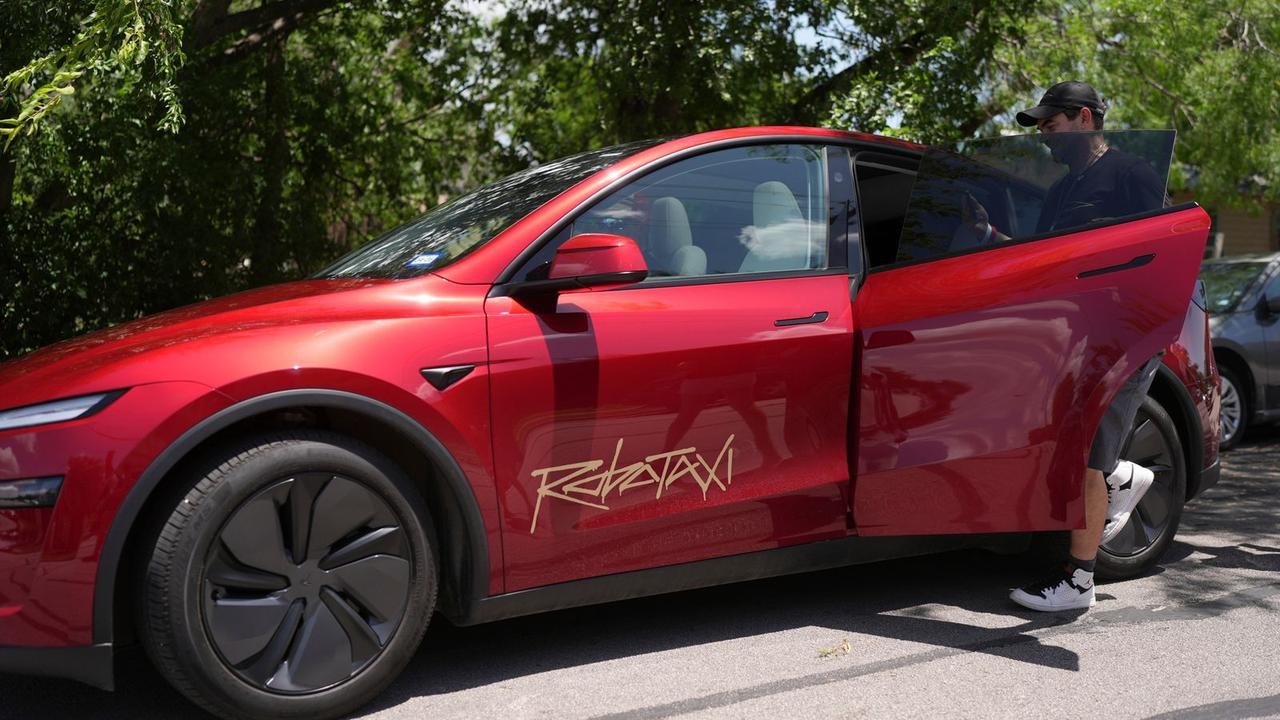
Source: Sky News
Reported Incidents and Safety Concerns
Several videos circulating on social media have highlighted potential safety issues with Tesla's Robotaxis. Incidents include:
- A Robotaxi stopping abruptly while passing a parked police car
1
. - Vehicles reportedly speeding and swerving into the wrong lane
1
2
. - A Tesla in a left-turn-only lane going straight through an intersection, with the steering wheel shaking erratically, before briefly veering into the wrong lane
4
. - A Robotaxi braking hard several times in the middle of the road, apparently responding to the flashing lights of parked police cars
4
.
These incidents have raised concerns about the readiness of Tesla's Full Self-Driving (FSD) technology for public use in Robotaxis.
Regulatory Response and Investigations
The National Highway Traffic Safety Administration (NHTSA) has responded to these reports by initiating contact with Tesla. In a statement, the NHTSA said, "NHTSA is aware of the referenced incidents and is in contact with the manufacturer to gather additional information"
1
2
. This inquiry joins an ongoing investigation into Tesla's Full Self-Driving mode in passenger vehicles, focusing on the system's ability to operate safely in low visibility situations2
.Tesla's Approach to Autonomous Driving
Tesla's strategy for autonomous driving differs significantly from its competitors:
- Camera-only system: Tesla relies solely on cameras and artificial intelligence, eschewing the additional sensors, radars, and LiDAR used by rivals like Waymo and Hyundai
2
3
. - Cost-effectiveness: This approach aims to reduce costs and vehicle weight, potentially making the technology more accessible to consumers
2
. - Vision-based AI: Tesla believes its system more closely replicates human vision, processing camera images faster than traditional sensor arrays
3
.
However, this camera-only approach has faced criticism, particularly regarding its effectiveness in challenging weather conditions such as fog and heavy rain
3
.Related Stories
Competitive Landscape and Market Position
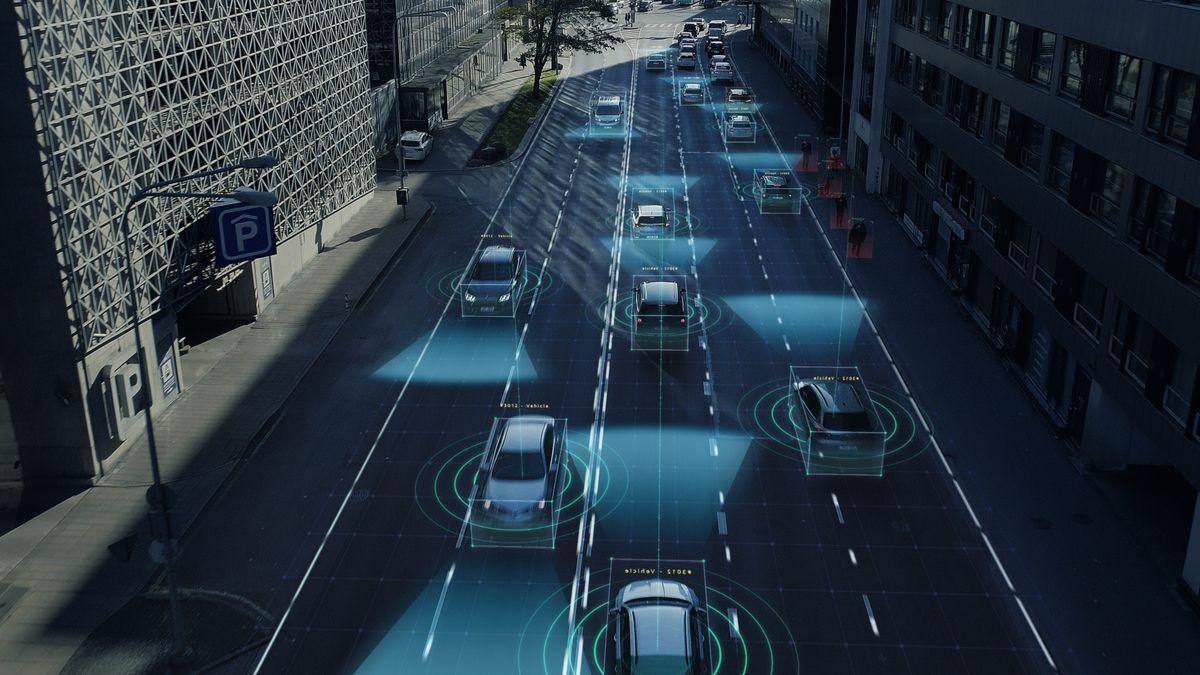
Source: Motley Fool
While Tesla's Robotaxi launch represents a significant step forward, the company faces stiff competition in the autonomous ride-hailing market:
- Waymo, owned by Google parent Alphabet, already offers self-driving taxi rides in multiple cities, including Austin, San Francisco, and Phoenix
1
. - Other companies like Amazon's Zoox are also active in the space, with operations in various U.S. cities
1
. - Fully driverless cars have logged millions of miles on public roads in countries such as China, UAE, and Singapore
1
.
Future Implications and Challenges
The success of Tesla's Robotaxi program could have far-reaching implications:
- Economic model: If successful, it could transform vehicle ownership, allowing cars to generate revenue when not in use
5
. - Technological advancement: The program serves as a real-world test for Tesla's AI and autonomous driving capabilities
3
. - Regulatory framework: The rollout may influence future regulations and safety standards for autonomous vehicles
4
.
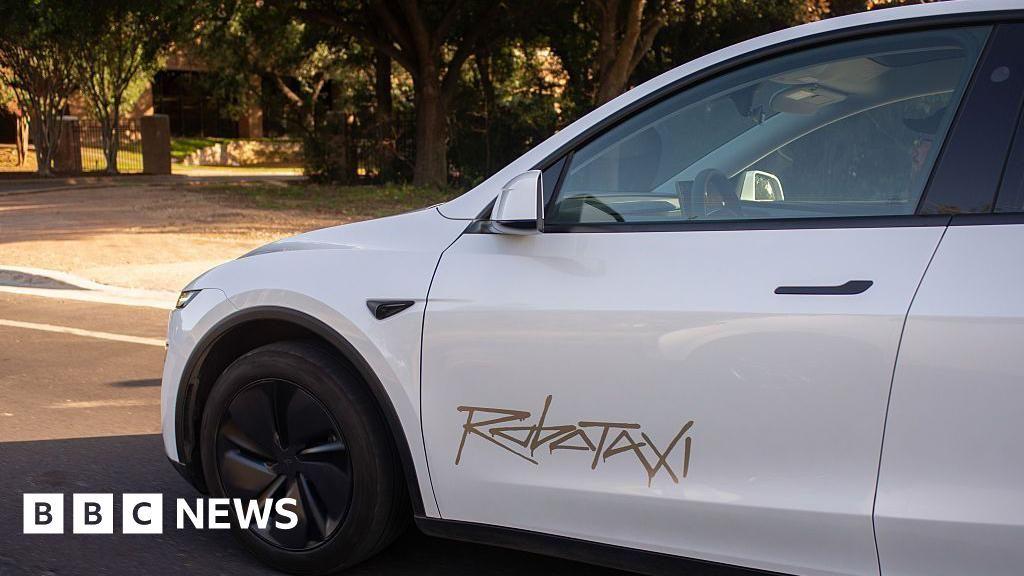
Source: BBC
However, challenges remain, including addressing safety concerns, building public trust, and refining the technology to handle complex real-world scenarios
3
4
.As Tesla continues to develop and expand its Robotaxi service, the industry and regulators will closely monitor its progress, safety record, and impact on the future of transportation.
References
Summarized by
Navi
[2]
[3]
[4]
[5]
Related Stories
Recent Highlights
1
Nvidia acquires AI chip startup Groq for $20 billion in largest deal ever
Technology

2
Chinese AI Models Close Gap With US Systems as Open-Source Strategy Reshapes Global Tech Order
Policy and Regulation

3
Samsung unveils Exynos 2600, world's first 2nm smartphone chip set to power Galaxy S26 series
Technology


